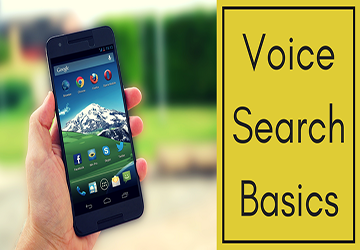The customer service landscape changes rapidly, and businesses must adapt to remain competitive. Today's customers expect instant answers to their queries and companies that fail to provide timely and accurate support risk ceding customers to competitors.
Businesses use chatbots as a powerful tool to improve the customer service process. Chatbots can automate routine tasks, provide instant customer support, and provide a personalized experience. With chatbots, businesses can improve response times, reduce customer support costs, and increase customer satisfaction.

Building a customer service chatbot requires careful planning and execution. Businesses must define the chatbot's purpose, choose a platform, design the conversation flow, create informative responses, test it thoroughly, launch it, and gather feedback to improve it. Following these steps, businesses can create chatbots that meet their goals and provide a superior customer experience.
This article will examine each step in detail and provide tips and best practices for creating a customer service chatbot. We will also discuss the benefits of chatbots for businesses and their customers and provide examples of successful chatbot implementations. By the end of this article, you'll know exactly how to create a customer service chatbot that delivers results.
1. Define the purpose of the chatbot
Defining the purpose of a chatbot is critical to its success. The purpose of a chatbot determines its design, functionality, and capabilities. Ask yourself what you want to achieve with a chatbot. Do you want to respond quickly to customer inquiries, automate repetitive tasks, reduce support costs or both? Defining the purpose of your chatbot will help you design a chatbot that meets your business goals and provides a great customer experience.
When defining the purpose of your chatbot, consider your audience. Who will use the chatbot? What are their expectations and preferences? By understanding the wants and needs of your audience, you can create a chatbot that speaks their language and meets their expectations.
2. Select the chatbot platform
Choosing the right chatbot platform is critical to creating a successful chatbot. There are multiple platforms available, each with its advantages and disadvantages. When choosing a platform, consider the following factors:
· Ease of use: Is the platform easy to use, or does it require programming skills?
· Integrations: Can the platform integrate with your messaging platform or website?
· Customization: Does the platform allow for customization and flexibility?
· Features: What features does the platform offer, and do they meet your business needs?
· Pricing: How much does the platform cost, and does it fit your budget?
With these factors in mind, you can choose a platform that suits your needs and helps you create a chatbot that delivers a positive customer experience.
3. Design the conversation flow of the chatbot
The backbone of a chatbot is the dialogue flow, which determines how it interacts with users and responds to their input. Make the conversation flow as natural and intuitive as possible. Start by identifying the most common questions or issues your customers will likely have and create a conversation flow around them.
It's essential to keep the flow of the conversation simple. Avoid technical jargon or complex language that might confuse users. Use clear and concise language that users can understand.
It's helpful to consider the user's context when designing the flow of a conversation. What information does the chatbot need to provide based on the user's location, history, or preferences? By considering the context of your users, you can create a personalized experience that fits their needs.
4. Create the chatbot's response
Chatbot responses should be informative and helpful. You should provide users with the information they seek or direct them to the appropriate resource. Answers must match your brand's voice and tone.
It would be best if you also considered user intent when crafting responses. What does the user want to achieve? What information do you need? By understanding the importance of your users, you can create replies that meet their needs and provide a positive customer experience.

5. Test the chatbot
Testing is an integral part of creating a chatbot. Testing conversation flow, responses, and how your chatbot integrates with your messaging platform or website is critical. Testing helps identify potential issues and ensures the chatbot provides a positive customer experience.
Using various test cases to cover all possible scenarios when testing a chatbot would be best. You can use tools like Botium or Botpress to automate testing and identify potential issues.
6. Launch the chatbot
Once you've tested your chatbot and resolved any issues, it's time to launch it. Ensure you provide clear instructions on accessing the chatbot on your website or messaging platform. You should also regularly monitor your chatbot's performance and make adjustments as needed.
When launching a chatbot, you should allow users to converse with a human agent, and this ensures customers choose and get the support they need.
7. Train the Chatbot
Training a chatbot is an ongoing process. As users interact with the chatbot, it learns and improves its responses. Monitoring chatbot performance and analyzing user feedback to identify areas for improvement is essential.
You can use machine learning techniques such as natural language processing (NLP) and sentiment analysis to train a chatbot. These technologies enable chatbots to understand user input and respond more naturally and intuitively.
You can also use user feedback to train your chatbot. Analyzing user feedback can help you identify common problems or problems that your chatbot may need to address more effectively. Addressing these issues can improve chatbot performance and enhance customer experience.
8. Monitor chatbot performance
Monitoring your chatbot's performance is critical to its success, allowing you to spot issues and make adjustments if necessary. You should regularly monitor your chatbot's performance and analyze metrics such as response time, user satisfaction, and the number of requests handled.
By monitoring your chatbot's performance, you can identify areas for improvement. For example, if users frequently ask the same question, you may need to update your chatbot's responses or adjust the flow of the conversation.
9. Keep improving your chatbot
Creating a chatbot is not a one-time task but an ongoing process that requires continuous improvement. As users interact with chatbots, they receive feedback that can be used to improve their performance.
To continuously improve your chatbot, you should analyze user feedback, monitor its performance, and make adjustments if necessary. You can also use machine learning techniques to train your chatbot and improve its responses.
You can continuously improve your chatbot to provide a better customer experience and achieve your business goals.
10. Provide human support when needed
While chatbots can handle many customer inquiries and issues, sometimes users need to speak with a human agent. Enable users to talk to a human agent when needed, ensuring customers have a choice and access to the support they need.
When providing human support, you should ensure that agents are well-trained and equipped to handle customer queries effectively. You can also use chatbots to support human agents and provide them with relevant information so they can resolve issues faster.
Diploma
Building a customer service chatbot can help you provide fast and efficient customer support. Following the steps mentioned in this article, you can create a chatbot that meets your business goals and provides a positive customer experience. Remember to define the chatbot's purpose, choose the platform, design the conversation flow, create the answers, test the chatbot, launch it, train it, monitor its performance, continuously improve it and provide human support if needed. With these steps, you can create a chatbot that enhances customer service and helps you achieve your business goals.




